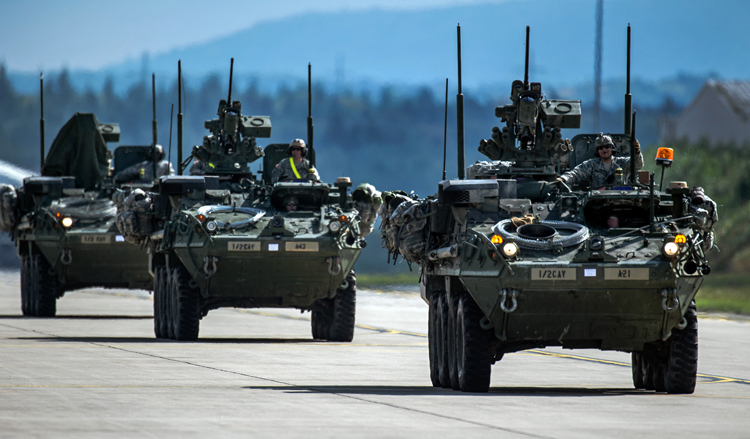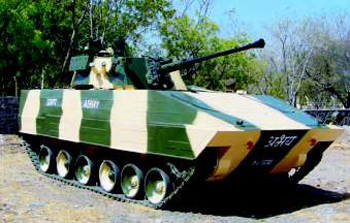INDIAN ARMED FORCES CHIEFS ON OUR RELENTLESS AND FOCUSED PUBLISHING EFFORTS

The insightful articles, inspiring narrations and analytical perspectives presented by the Editorial Team, establish an alluring connect with the reader. My compliments and best wishes to SP Guide Publications.

"Over the past 60 years, the growth of SP Guide Publications has mirrored the rising stature of Indian Navy. Its well-researched and informative magazines on Defence and Aerospace sector have served to shape an educated opinion of our military personnel, policy makers and the public alike. I wish SP's Publication team continued success, fair winds and following seas in all future endeavour!"

Since, its inception in 1964, SP Guide Publications has consistently demonstrated commitment to high-quality journalism in the aerospace and defence sectors, earning a well-deserved reputation as Asia's largest media house in this domain. I wish SP Guide Publications continued success in its pursuit of excellence.
- Operation Sindoor: Resolute yet Restrained
- India’s Operation Sindoor Sends a Clear Message to Terror and the World – ‘ZERO TOLERANCE’
- Japan and India set forth a defence cooperation consultancy framework, talks on tank and jet engines
- Terrorist Attack in Pahalgam in Kashmir: Unfolding a long surgical war against PAK
- Lt General Pratik Sharma takes over Command of Indian Army's Northern Command
Joint Stryker ICV Production
The project is in three-phases - limited off-the-shelf purchase of Stryker ICV under America's foreign military sales (FMS) programme; joint production in India, and; co-development of futuristic armoured versions of Stryker ICV
 |
The Author is Former Director General of Information Systems and A Special Forces Veteran, Indian Army |

News Reports of June 17, 2024 state India and the US are in an advanced stage of talks for joint manufacture of the Stryker infantry combat vehicles (ICVs). The project is in three-phases: limited off-the-shelf purchase of Stryker ICVS under America's foreign military sales (FMS) programme; joint production in India, and;co-development of futuristic armoured versions of Stryker ICV. The report says while the Ministry of Defence (MoD) is examining the US proposal, the US has offered to demonstrate the mobility and firepower of the eight-wheeled Stryker ICV in high altitude terrain.
How soon the Stryker deal is finalized would be contingent upon the Stryker ICV meeting the operational requirements of the India Army, as well as a high level of indigenisation and transfer of technology (ToT) to include "critical" technologies to the Indian co-production partner. The media has quoted an unnamed source, saying, "If the Stryker project is finalised, the existing Indian capabilities will be taken into account. Strykers will have to be customised and technologically configured for the Indian terrain, including operations in high-altitude areas like eastern Ladakh and Sikkim."
India and the US are in an advanced stage of talks for joint manufacture of the Stryker infantry combat vehicles (ICVs)
The Indian Army has an existing fleet of over 2,000 Russian-origin BMP-II vehicles; which will need to be replaced as and when they complete their operational life. The US naturally will like to ink the Stryker deal at the earliest, having already bagged defence deals from India to the tune of $22 billion since 2007 and reportedly inking another two mega defence deals (other than the Stryker) with India in the current financial year.
A number of questions, however, arise in context of the Stryker deal. Are the off-the-shelf purchases of the Stryker ICVs under the FMS programme planned "without" any modifications, or will the modifications be done in the US before delivery, and if so, what is the time-schedule involved? The priority of futuristic ICVs is in the mountains. But the Stryker ICV having Caterpillar C7 350 horsepower engine is underpowered for deployment in mountains. How long will the US take to fit a more powerful engine for off–the-shelf imports by India? Does the Army's existing fleet of BMP-II ICVs need immediate replacements requiring off-the-shelf imports of Stryker ICVs?

Also, the Army needs ICVs for amphibious operations and the Stryker ICV is not amphibious. Does the plan of joint production envisage modifying a certain quantity of Stryker ICVs for amphibious operations, and if so, in what timeframe? Will the US provide 100 percent ToT or will it be only on paper like the GE-F404 engine where the critical technology of the inner core of the engine is not being transferred despite announcing 100 percent ToT? What will "actually" be the percentage of indigenous content in the co-produced Stryker ICVs? How will this adversely affect the indigenous development of a futuristic ICV already underway? Are we going in for the Stryker joint production of the Stryker ICV because of persistent pressure of the US and political considerations?
The Indian Army has an existing fleet of over 2,000 Russian-origin BMP-II vehicles; which will need to be replaced as and when they complete their operational life
America has been hard-selling the Stryker to India since its first offer in 2000. During the Indo-US joint Exercise 'Yudh Abhyas-2009' in deserts of India, the US contingent deployed the Stryker ICVs. Before the visit of the US National Security Adviser Jake Sullivan to India on June 17-18 for reviewing the 'Initiative on Critical and Emerging Technologies (iCET), US Secretary of Defence Lloyd J. Austin cited the "co-production of armoured vehicles with India" as yet another indicator of the upward trajectory in the bilateral defence partnership during the Shangri La dialogue two weeks ago. Another view is to promote 100 percent indigenous production of the futuristic ICVs, which has already made considerable progress, rather than joint production of the Stryker ICVs especially since the Stryker in its present form is unsuited forhigh-altitude and is not amphibious either.

Moreover, Stryker's history in operations has been dismal; insufficient armour, wheeled design causing maintenance problem with mud clogging the engine, malfunctioning computer, improvised explosive devices (IEDs) ripping through the flat underbelly. malfunction in computer system and limited off-road mobility. Troops called it "Kevlar Coffin". Some analysts opine that Stryker is not designed for direct assault and engaging enemy armour.
Tata Advanced Systems and the Defence Research and Development Organisation (DRDO) have jointly produced the Wheeled Armoured Platform (WhAP), also called TATA 'Kestrel'
Tata Advanced Systems and the Defence Research and Development Organisation (DRDO) have jointly produced the Wheeled Armoured Platform (WhAP), also called TATA 'Kestrel', which was first unveiled during Defexpo 2014 in Delhi. WhAP is 8x8 amphibious ICV that has performed well in high-altitude trials. WhAP development was taken up to provide common platform for wheeled APC, ICV with 30 mm cannon, Light Tank with 105mm main gun, command post vehicle, ambulance, special purpose platform, 120mm mortar carrier and CBRN Vehicle.

WhAP, indigenous with an imported engine, is designed for modern warfare keeping in mind crew survivability, protection against small arms fire, mobility and protection against concealed explosives. It is equipped with Kongsberg 30mm cannon, which can be fired remotely. It can fire high-explosive incendiary (HEI), armor-piercing incendiary (API), and armor-piercing fin-stabilized discarding sabot tracer (APFSDS-T) rounds with a 30mm caliber. It has an effective range of 3,000m. The 40-mm grenade launchers are used as a secondary weapon. It can accommodate anti-tank missiles or a 12.7mm machine gun.
The Indian Army reportedly plans to acquire 200 WhAP. The first batch of WhAP was inducted into the Indian Army on April 12, 2022
In October 2019, the MoD cleared production of WhAP and export to friendly country. The Indian Army reportedly plans to acquire 200 WhAP. The first batch of WhAP was inducted into the Indian Army on April 12, 2022. The ITBP is also being equipped with WhAP. WhAP can carry 2+9 soldiers compared to 3+8 by Stryker. WhAP's power-to-weight ratio is 25, compared to Stryker's 17.24. WhAP weighs 24.5 tonnes compared to 20.3 tonne weight of Stryker, but with better power to weight ratio the WhAP is better suited for difficult terrain.

In the 1970s DRDO began developing the tracked ICV 'Abhay'. In 2008, the DRDO said, "The multi-disciplinary, multi-laboratory, Technology Demonstration Programme for development of Infantry Combat Vehicle (ICV) Abhay, has been successful.Technologies developed under this programme can be adopted for futuristic ICV and light tracked vehicle projects." Nothing was heard thereafter, till DRDO in collaboration with Larsen and Toubro (L&T) developed the Zorawar Light Tank, which used some of the systems developed for Abhay.Trials of the Zorawar Light Tank were reported in these columns in February this year. The first batch of these tanks is slated for induction into the Indian Army in 2027.
The US offered to relocate the entire F-21 (a revamped F-16) fighter jet production facilities of Lockheed Martin to India in the 1990s; to throttle India's nascent LCA programme. Is the Stryker offer to stymie Indian efforts for 100 percent indigenisation? Why the DRDO took decades to develop the Abhay ICV and whether this was to facilitate imports will never be known. Finally, the question is can we meet our operational requirements with the indigenous WhAP ICV and Zorawar Light Tank (that can even be modified more if at all required) or do we still need joint production of the Stryker?





